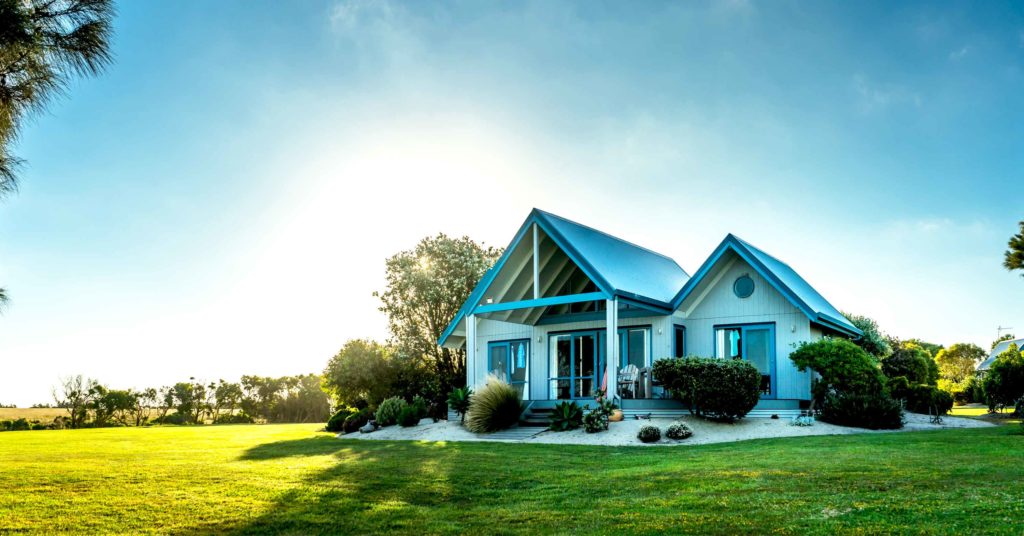
On the way home – How to build a dream house property portfolio
The Kiwi dream of home-ownership remains a potent force in the national psyche and a key driver of real financial decisions.
Admittedly, the New Zealand property market has moved on somewhat since the hallowed era of the ‘quarter acre block’ and the cheap-as-chips suburban bungalow. But if the dream has been down-sized, the real estate reality appears further away than ever for the latest generation of Kiwi house-shoppers.
A long period of rampant house price inflation has pushed the New Zealand into the ranks of the world’s most expensive property markets – Indeed, the issue of ‘housing affordability’ has been both a focus of current government policy and the source of intergenerational angst.
Good news for home buyers
The good news for home-buyers – in Auckland at least – is that the New Zealand residential property market has eased off recently. According to the latest figures from real estate information website QV, the average house price in Auckland has gone backwards almost 3 per cent in the 12 months to June 30 this year.
True, the boom continues in many parts of regional New Zealand but first home-buyers, in particular, are stepping with renewed confidence into the housing market.
Gaining a foothold on that first rung of the housing ladder, however, has never been easy for most Kiwis – and it’s not necessarily getting any easier despite a number of government-funded leg-ups such as the KiwiSaver first home-buyer subsidies.
Financial product research house, Canstar, said in a release this June that saving for a house deposit “can often seem like an insurmountable hurdle when you’re looking to buy your first home”.
“Even in a climate of low interest rates, KiwiSaver help, and a relatively flat housing market, the size of a deposit is still an obstacle for many first home buyers,” Canstar said. “That means first home buyers are looking to get creative to achieve their goal.”
Creativity, according to Canstar, could mean house-buyers have to look in areas outside the norm and/or purchasing a smaller home.
Either way, saving for a house deposit requires some old-fashioned number-crunching, a clear goal and discipline along the way.
There are a few important factors to consider, including: target deposit amount; ability to save (ie expected surplus income); timeline; and, how to best-invest those savings until ready to purchase a house.
Of course, these parameters will vary considerably from person-to-person but some aggregate figures can illustrate the point.
Average house deposit of $140,000
Based on QV statistics that put the average residential house price in New Zealand as at June this year at almost $690,000, buyers would need about $140,000 to hit the current minimum 20 per cent deposit required by most lenders.
Five years to save up sounds about right
It’s probably safe to assume that purchasing a home falls in the short-to-medium time horizon of most potential buyers – say, five years to accumulate the $140,000 (or more as house prices could increase further over the deposit-saving period).
Most likely, KiwiSaver will form part of the house deposit-savings strategy. In a report published this July, accounting firm KPMG estimates that KiwiSaver withdrawals now represent about half of all first-home deposits.
Not all house-hunters, though, have access to the KiwiSaver boost and even those who do will probably have to save additional funds elsewhere: the average KiwiSaver first-home withdrawal is just under $25,000 (well short of our $140,000 aggregate example), according to figures from the Inland Revenue Department.
How to best invest those house deposit savings until you’re ready
How to invest those house-deposit savings is a question that boils down to asset allocation fundamentals. For instance, given the typically short timeframes involved, a house deposit investment portfolio would, in general, have little exposure to risky assets such as shares: but tipping the house money into a low- or no-yielding bank account is probably not the best solution either.
At the same time, investors would probably like to grow the house deposit as quickly as possible within a safety zone that reflects both realistic asset class assumptions and their individual risk appetites.
The BNZ KiwiSaver scheme, one of the few to offer a dedicated first home-buyer fund, provides a simple example of a portfolio designed for those saving for a house deposit. According to the BNZ product disclosure statement, the First Home Buyer Fund, allocates 85 per cent to income assets and the remaining 15 per cent to growth assets (shares).
Breaking that down further, the BNZ fund has a target asset allocation of:
- 60 per cent in ‘Cash and cash alternatives’;
- 19 per cent in ‘International fixed income’;
- 6 per cent in ‘New Zealand fixed income’;
- 10 per cent in ‘International shares’; and,
- 5 per cent in ‘Australasian shares’.
**BNZ information is accurate as at the time of writing this article.
Obviously, this example won’t apply to every saver looking to build a house deposit – and investors should use tools like Sorted’s Investor Calculator (which is linked on InvestNow), as well as potentially getting independent financial advice. Factors like your risk profile, level of savings, time horizon, and personal investment preferences are some of the factors that play a role in determining what mix of assets best meets your needs.
InvestNow members can then easily create an appropriate house deposit portfolio via a mix-and-match of funds and term deposits available on the platform.
Home ownership in New Zealand has fallen slightly over the last decade: Statistics NZ figures show about 62 per cent of the 1.7 million plus Kiwi households owned their home in 2018, compared to almost 70 per cent in 1999.
But buying a house will continue to be a key life goal for most New Zealanders even if the path to get there has changed.
